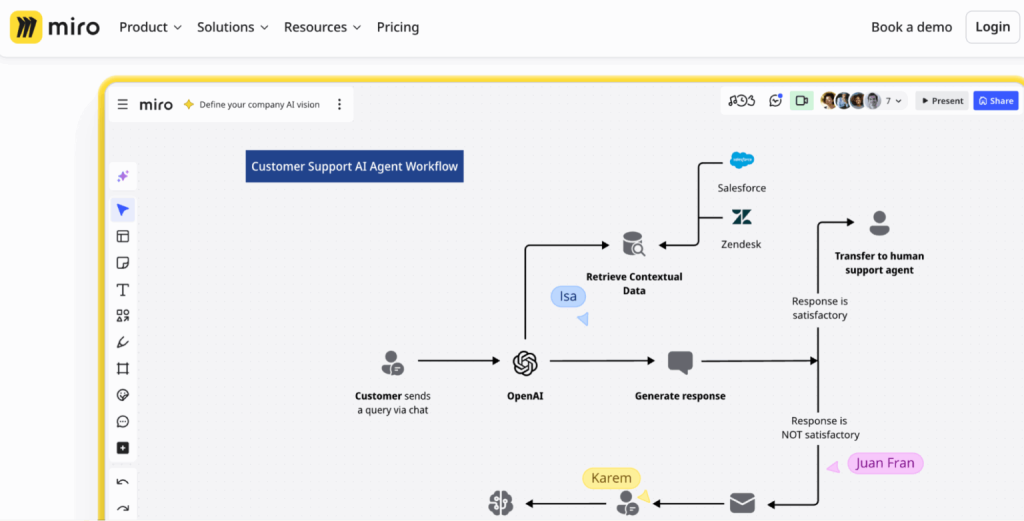Are you tired of the never-ending pressure to create marketing content? Curious about how AI can boost your marketing results without burning you out?
In this post, you’ll explore practical ways to use AI to simplify your marketing workflow from planning and content creation to automation and performance optimization. The goal? To help you save time, minimize stress, and concentrate on what truly drives growth: impactful results.
Also Read: Micro Influencer Marketing in Kenya: My Full Guide for Brands & Creators
The Power of an AI-First Marketing Mindset
Adopting an AI-first approach goes beyond simply adding artificial intelligence tools to your marketing toolbox it’s about fundamentally rethinking how you plan, execute, and optimize your marketing strategies. This mindset encourages marketers to re-evaluate where AI can be seamlessly integrated to drive better outcomes.
Importantly, AI isn’t here to replace human creativity or strategic thinking. Instead, it amplifies these strengths. The most forward-thinking marketers use AI where it delivers the greatest returns while preserving human expertise for tasks that demand intuition, empathy, and creativity. When you strike this balance, your marketing becomes more innovative, efficient, and impactful.
Take Angie Carel, for example. She transformed her agency’s direction by embracing an AI-centric strategy. Noticing that AI was making services like logo design more accessible and less differentiated, she chose to lean into the shift rather than resist it. This led to the creation of VIDA, a visual ideation assistant powered by AI that helps users brainstorm logo concepts at no cost.
Once clients generate their ideas using VIDA, Carel then steps in to refine and polish the design using her years of professional experience this is where her true value lies. By aligning her services with the evolving role of AI, she ensured her expertise remained essential and profitable.
For those just beginning their AI journey, Carel suggests starting small. Identify simple but high-value opportunities where AI can streamline workflows or enhance productivity right away.

Step 1: Choose the Right Marketing Tasks for AI Integration
One of the most common pitfalls in adopting AI is trying to do too much, too soon. Instead of attempting to apply AI across all areas of your marketing, it’s wiser to start with a narrow focus. This allows you to gain hands-on experience, build confidence, and create a solid foundation for expanding your AI efforts later on.
Look for tasks that align with the following criteria they’re typically the easiest and most effective places to start using AI:
- Data-Driven Processes: These include analyzing web traffic and customer behavior, drawing insights from large datasets, audience segmentation based on demographics or habits, evaluating campaign performance, and making informed decisions rooted in data.
- Repetitive or Routine Tasks: Activities that follow a clear, predictable process are ideal for automation. These could include scheduling social posts, generating reports, or sending follow-up emails.
- Content Creation: If your task involves producing written, visual, or audio content like social media captions, blog posts, graphics, or videos it’s likely something AI can support or accelerate.
Once you’ve spotted potential areas where AI could be useful, it’s important to conduct a quick value-impact assessment to help prioritize. Even large organizations don’t need to apply AI everywhere just a few high-impact use cases can deliver big results.
For solo marketers or small agencies, the key is to focus on tasks that give you the most return with the least effort. Ask yourself:
- Do I already understand the tools I’ll need for this?
- Does this task currently take up too much of my time?
- Is this something I don’t enjoy doing manually?
- Could AI significantly speed up or improve this process?
By being selective and strategic, your first AI experiments are more likely to succeed delivering tangible results without unnecessary complexity.
Step 2: Map Out Your AI-Driven Solution
After pinpointing your top AI opportunities, the next move is to build a clear, step-by-step plan for how AI will improve your workflow this is known as solution mapping.
Solution mapping helps you visualize how a task progresses from start to finish and where AI can step in to add value along the way. It ensures that you’re not just using AI for the sake of it, but in a strategic, purposeful way.
Here’s how Angie Carel approaches this process:
- Begin with a Visual Draft: Start by sketching out what your process currently looks like and where you want it to go. Carel often uses pen and paper placing the starting input on one side and the final output on the other.
- Outline the Steps Between: List all the actions needed to get from input to output. This could take the form of a flowchart, bullet list, or bubble diagram whatever format helps you think clearly. For a more interactive and collaborative approach, tools like Miro and Mural are excellent for digital solution mapping.
- Document Your Workflow: If you’re working on paper, snap a photo and upload it to an AI platform (like ChatGPT) to get suggestions, feedback, or improvements for your process.
- List the Tools You’ll Need: Go through each step and decide which AI tools or platforms can help you complete the task more efficiently.
- Assess Skill Gaps: Think about whether you or your team need to learn anything new to successfully implement your AI-powered process. Plan for training if needed.
- Develop an Action Plan: Lay out a concrete plan for rolling out your solution. Identify who will do what, by when, and with which tools.

Real-World Example: An AI-Powered Content Marketing Workflow
To illustrate, Carel shares a sophisticated example of solution mapping in a content marketing context:
- Each morning, an AI agent scans online sources to find leads in industries like snacks, candy, and ice cream.
- The AI sends these leads to Slack.
- A second AI tool evaluates the leads, filtering them based on specific criteria (e.g., only chocolate-related products).
- Qualified leads are posted back to Slack.
- Another AI assistant writes blog content about the selected products.
- A social media tool generates posts based on the blog.
- A repurposing assistant adapts that content for various platforms.
Though complex, this example highlights the power of solution mapping to streamline multiple processes and boost overall marketing productivity through thoughtful AI integration.
Also Read: How to Use AI in Marketing in Kenya
#3: Turning Your Strategy Into Action for Marketing Teams
Once your solution map is complete, the next step is to bring it to life this might involve integrating new tools, setting up automations, or revamping your existing workflows.
When incorporating AI into your marketing processes, it’s wise to begin with platforms you’re already familiar with. For those just starting out, this often means using popular, all-purpose AI tools.
Although there are niche tools tailored for specific tasks, getting comfortable with a versatile platform like ChatGPT, Claude, or Gemini can offer significant benefits. As Carel points out, taking the time to fully explore and understand a tool like ChatGPT can unlock most of the features available across the AI landscape.
More experienced users may find it helpful to leverage different tools for different needs, depending on their strengths.
Carel explains, “Claude excels in writing, so I often use it for content, but ChatGPT currently offers stronger capabilities when it comes to deep research. I’ve reached a point where I match the tool to the task based on what each one does best.”
Throughout implementation, keep a close eye on outcomes and adjust where needed. Expect a learning curve, but with consistent effort and refinement, your solution should begin to show tangible benefits.
Lastly, make sure the solutions you put in place become a sustained part of your workflow not just a one-time experiment.


